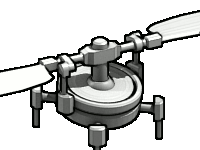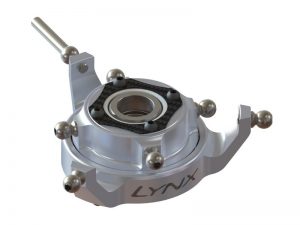The Swashplate of a helicopter
A helicopter’s main rotor is the most important part of the vehicle. It provides the lift that allows the helicopter to fly, as well as the control that allows the helicopter to move laterally, make turns and change altitude. To handle all of these tasks, the rotor must first be incredibly strong. It must also be able to adjust the angle of the rotor blades with each revolution they make. The pilot communicates these adjustments through a device known as the swash plate assembly.
A swashplate is a device that is used to transmit the pilot’s commands from the non-rotatingfuselage to the rotating rotor hub and blades. The fact that the rotor blades are rotating at a very high speed makes the swashplate mechanism’s task more challenging. The mechanism consists of two main parts: a stationary and a rotating swashplate. The stationary swashplate is able to tilt in all directions and move vertically. The rotating swashplate is mounted on the stationary swashplate by means of a bearing, and is allowed to rotate with the main rotor mast.
A swashplate mechanism controls the cyclic and collective pitch of the rotor blades. The cyclic pitch of the rotor blades is used to change a helicopter’s roll and pitch. To tilt the helicopter forward, the difference of lift around the blades should be at a maximum along the left-right plane, creating a torque that, due to the gyroscopic effect, will tilt the helicopter forward instead of sideways. This is accomplished by tilting the swashplate assembly through pushrods. Collective pitch of the rotor blades, responsible for the average lift force, can be changed by moving the swashplate assembly vertically without tilting it.


